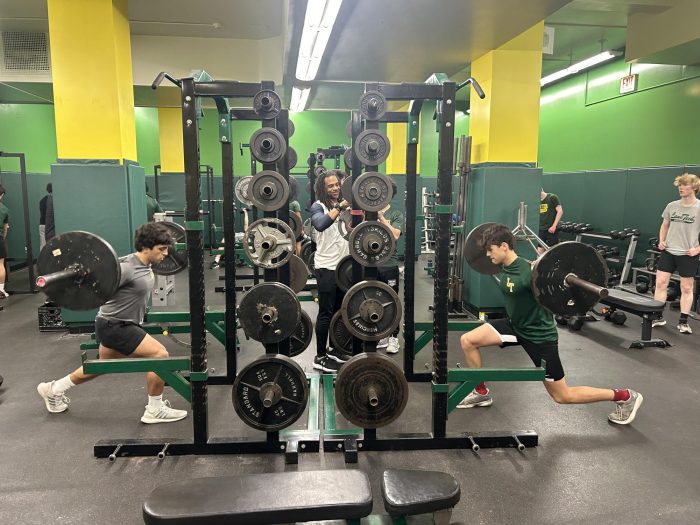Athletic diets: You are what you eat
Athletes here at Lane have plenty of methods to achieve being the best athlete they can be.
Although the most common practices taken on by athletes to achieve such a goal would be practicing and exercising, there is another factor that plays a huge part. No, it is not the weights that they place in their hands but the food they put in their bodies.
Diets are used to help craft a person’s ideal body. Brett Wicklund, Div. 751, has been on a high caloric intake diet since sophomore year.
“I’m trying to put on weight,” Wicklund said. “Just having a lot of protein and a lot of calories is the best way to do that.”
Wicklund uses this diet in order to gain back the calories lost in his workouts.
“I burn a lot of calories for baseball by working out and stuff so the more calories I burn, the more weight I lose,” Wicklund said. “If you have a higher caloric intake, you can make up the high intensity workouts with having a lot of calories.”
Not only do the athletes see the advantages in certain diets, coaches know it as well.
“A diet is everything,” Head of the Boys sophomore soccer team, Coach Davey said. “In terms of nutritional value, if you don’t have the metabolites in your system, things like B vitamins in order to burn that fuel efficiently, once again you’re going to see yourself slowing down.”
Although a diet usually means to lose weight, others might use diets to gain weight. Jeremiah Olojo, Div., 759, is a year round athlete. He plays football, wrestles, and throws shotput for track. When looking at three different sports, it’s the same as looking at three different diets.
“With each sport comes with different diets,” Olojo said. “The way you might eat in one sport might not be conducive to eat the same way in another sport. My football body and my wrestling body are two different things.”
Olojo must make certain adjustments to his diets in order to fit the body he sees most fit for certain sports. Changing diets from a football diet to a wrestling diet, he saw a 15-20 pound difference in his weight. But there are reasons behind such a significant drop in weight.
“For football, It is all about being a rock, you have to be solid,” Olojo said. “You need to be able to physically overpower the person. For wrestling, I have to be a lot more lighter and a lot more agile.”
Wicklund also saw a difference when dieting. But instead of a drop, he saw an increase.
“Since I’ve started weight lifting and trying to eat better, I gained 25-30 pounds,” Wicklund said. “The bigger you are, the faster you throw, the faster you run, the harder you hit.”
Different sports actually do have different diets. Varsity swimmer and water polo Almina Sabanovic, Div. 757, does as well. For swimmers, they follow the USA Swimming nutrition guidelines and tips — which are “strict,” according to Sabanovic, but a “must do.”
“You constantly have to evaluate how much/what you’ve been eating all day,” Sabanovich said. “You don’t want to just eat carbs all day long or protein all day. There has to be a balance.”
Although it may be seen as strict to have certain guidelines for a diet, athletes see improvements throughout the season.
“I can lift heavier and my shoulder and hips are stronger,” Sabanovic said. “It overall makes me feel better and more alive instead of sluggish.”
Your donations directly fund the Lane Tech student journalism program—covering essential costs like website hosting and technology not supported by our school or district. Your generosity empowers our student reporters to investigate, write, and publish impactful stories that matter to our school community.
This website is more than a publishing platform—it's an archive, a research tool, and a source of truth. Every dollar helps us preserve and grow this resource so future students can learn from and build on the work being done today.
Thank you for supporting the next generation of journalists at Lane Tech College Prep!

I started off my Junior year as a J1 (Journalism 1) student and focused most of my work towards the sports here at Lane Tech College Prep. I have written...




